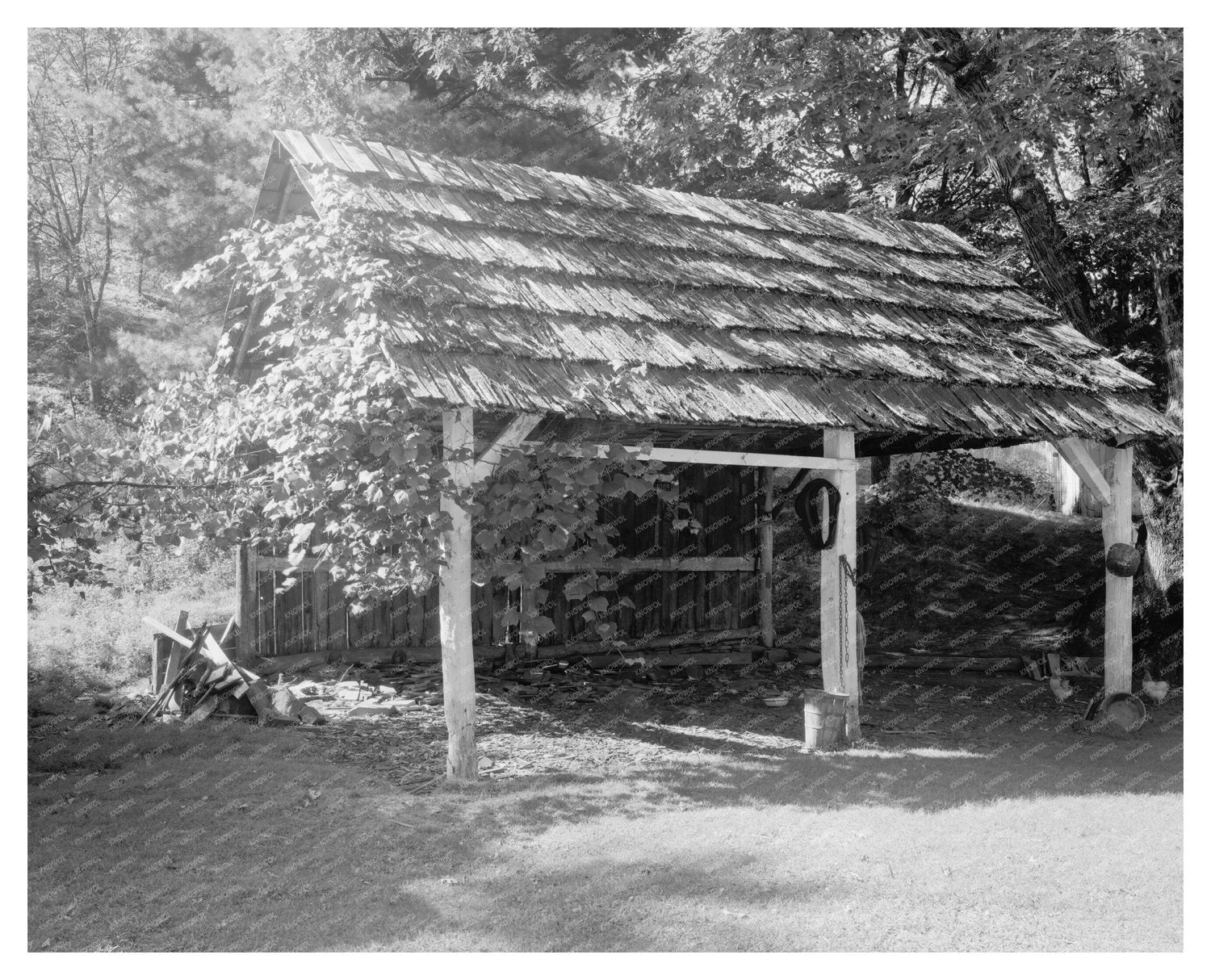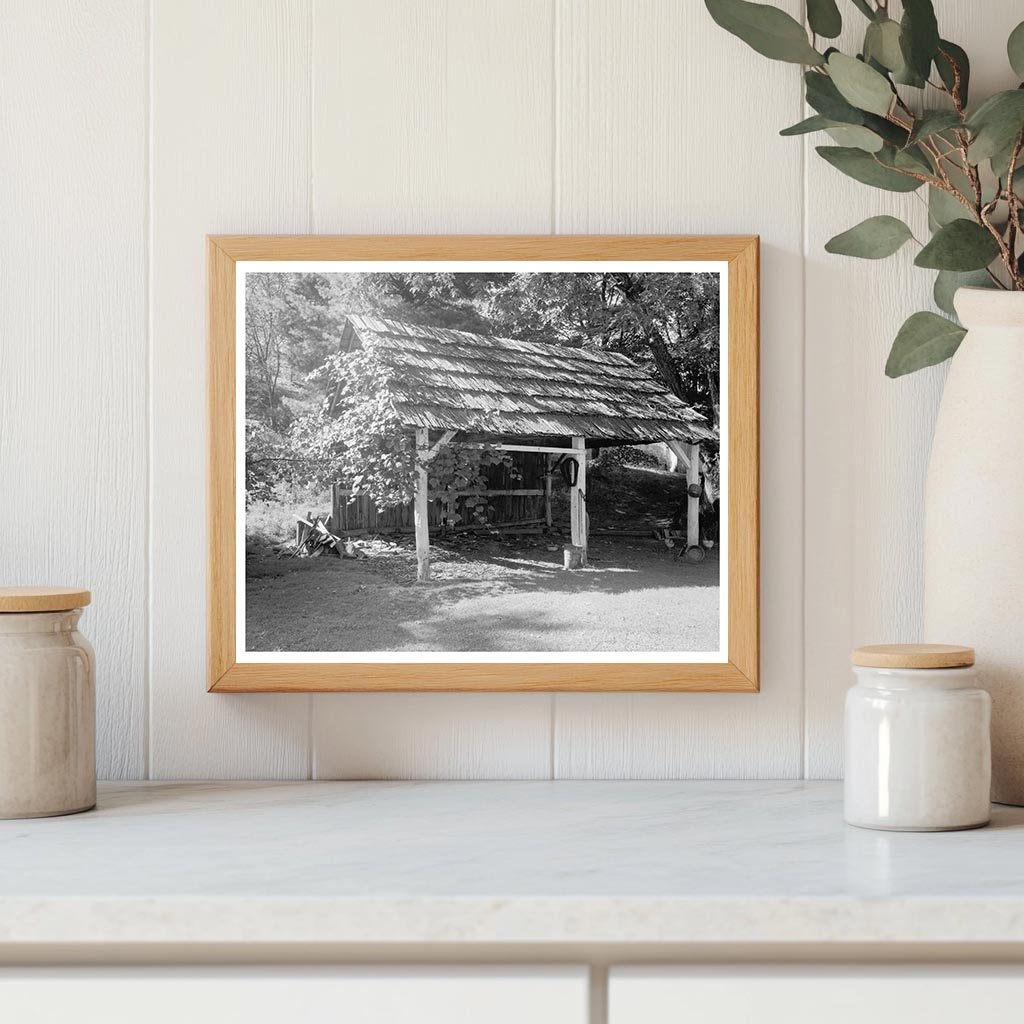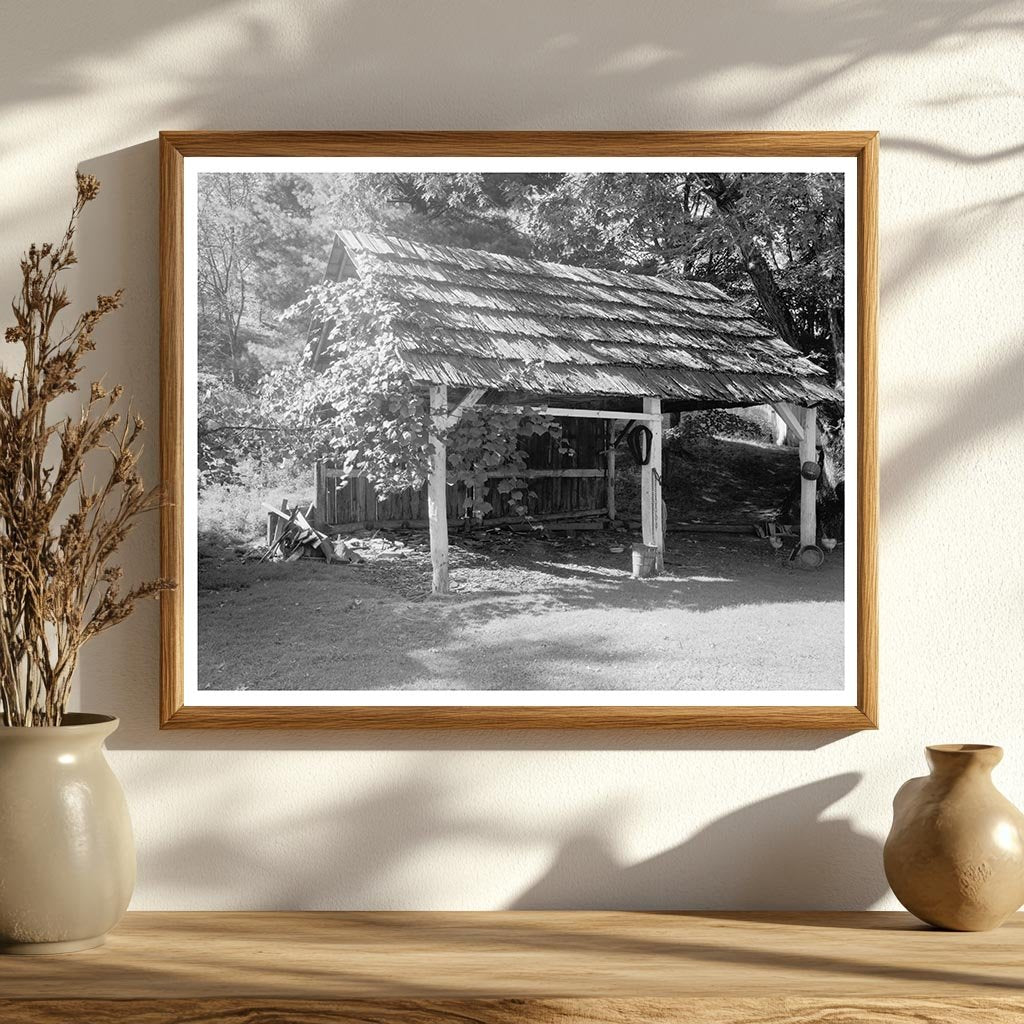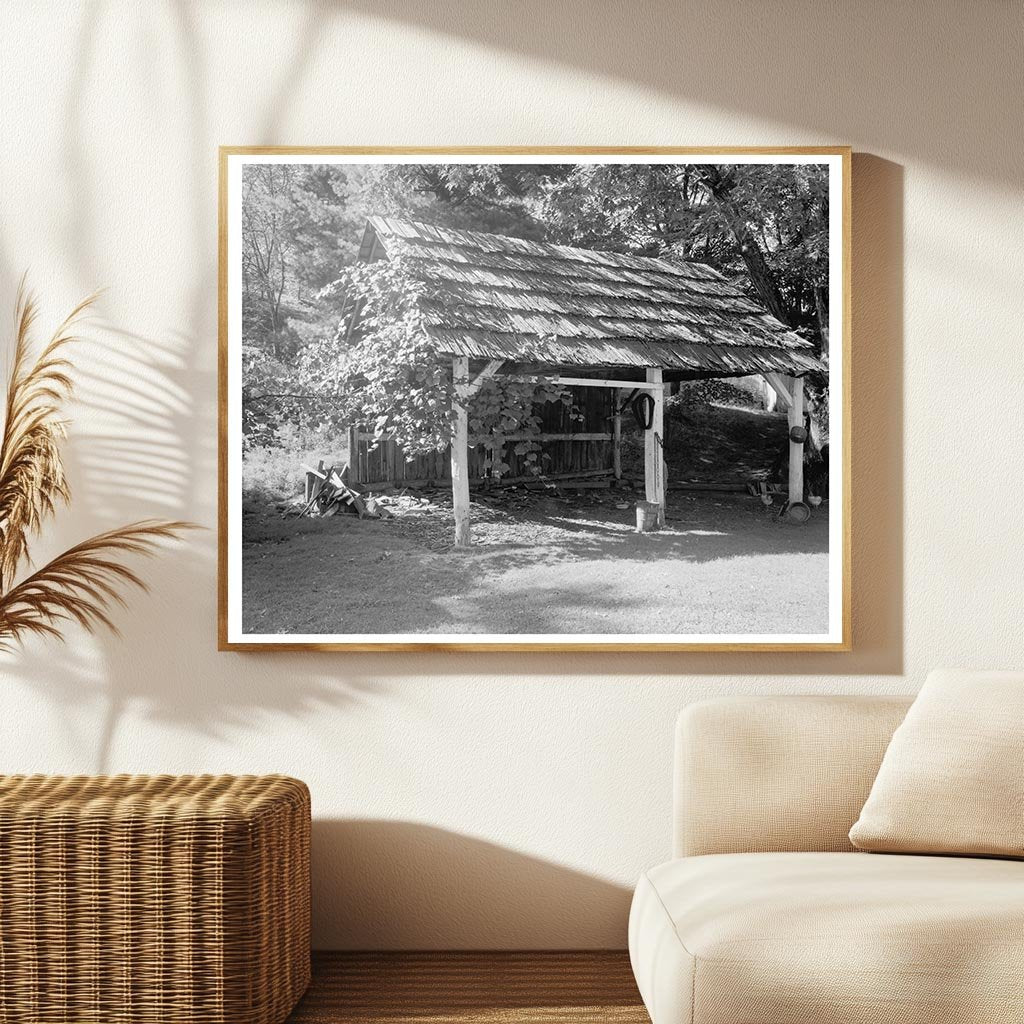



Historic 1812 Building in Valle Crucis, NC - 1941 Image
This vintage photograph captures a historic structure in Valle Crucis, Watauga County, North Carolina. The building, dating back to 1812, is noted for its architectural significance and connection to the regions history. It is particularly recognized for its role in producing carpets for the White House, reflecting its importance in American craftsmanship.
The image is part of the Carnegie Survey of the Architecture of the South, a comprehensive documentation project that highlights the architectural heritage of the southern United States. This photograph not only showcases the unique design elements of the building but also contributes to the understanding of early American architecture.
Published in Thomas Tileston Watermans The Early Architecture of North Carolina in 1941, this photograph serves as a valuable resource for historians and architecture enthusiasts. The work is preserved in the Library of Congress, ensuring its accessibility for future generations interested in the rich architectural tapestry of North Carolina.

Historic 1812 Building in Valle Crucis, NC - 1941 Image
